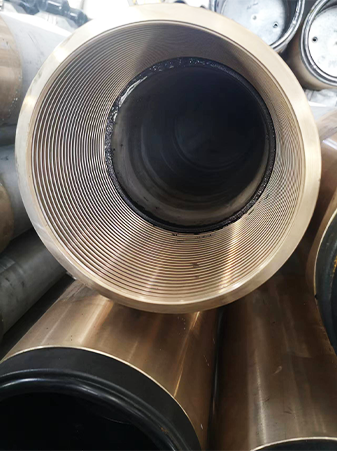- Afrikaans
- Albanian
- Amharic
- Arabic
- Armenian
- Azerbaijani
- Basque
- Belarusian
- Bengali
- Bosnian
- Bulgarian
- Catalan
- Cebuano
- Corsican
- Croatian
- Czech
- Danish
- Dutch
- English
- Esperanto
- Estonian
- Finnish
- French
- Frisian
- Galician
- Georgian
- German
- Greek
- Gujarati
- Haitian Creole
- hausa
- hawaiian
- Hebrew
- Hindi
- Miao
- Hungarian
- Icelandic
- igbo
- Indonesian
- irish
- Italian
- Japanese
- Javanese
- Kannada
- kazakh
- Khmer
- Rwandese
- Korean
- Kurdish
- Kyrgyz
- Lao
- Latin
- Latvian
- Lithuanian
- Luxembourgish
- Macedonian
- Malgashi
- Malay
- Malayalam
- Maltese
- Maori
- Marathi
- Mongolian
- Myanmar
- Nepali
- Norwegian
- Norwegian
- Occitan
- Pashto
- Persian
- Polish
- Portuguese
- Punjabi
- Romanian
- Russian
- Samoan
- Scottish Gaelic
- Serbian
- Sesotho
- Shona
- Sindhi
- Sinhala
- Slovak
- Slovenian
- Somali
- Spanish
- Sundanese
- Swahili
- Swedish
- Tagalog
- Tajik
- Tamil
- Tatar
- Telugu
- Thai
- Turkish
- Turkmen
- Ukrainian
- Urdu
- Uighur
- Uzbek
- Vietnamese
- Welsh
- Bantu
- Yiddish
- Yoruba
- Zulu
Key distinctions between casing and tubing in oil and gas drilling operations
Understanding the Differences Between Casing and Tubing in Oil and Gas Operations
In the oil and gas industry, the terminology can be complex, especially when it comes to the components involved in the drilling process. Two of the most critical elements of well construction are casing and tubing. Although they might seem similar at first glance, they serve distinct purposes and are constructed differently. Understanding the differences between casing and tubing is essential for professionals in the industry, as well as for those interested in the engineering aspects of oil extraction.
Definition and Purpose
Casing is a series of steel pipes that are inserted into the wellbore after the drilling process is complete. Its primary purpose is to stabilize the wellbore and prevent the collapse of the surrounding rock. In addition, casing provides a barrier to protect the groundwater and other formations from contamination. The casing is cemented into place, which also helps to ensure that fluids intended for production do not escape into other formations or back to the surface.
On the other hand, tubing is a smaller diameter pipe that is inserted inside the casing after the well has been cemented. Its main purpose is to facilitate the flow of oil, gas, or other fluids from the reservoir to the surface. The design of tubing allows for efficient transportation of hydrocarbons and can be easily removed for maintenance or replacement if necessary. While tubing is crucial for production, it does not have the structural integrity to support the wellbore like casing does.
Mechanical Properties
The mechanical properties of casing and tubing are tailored to their specific functions. Casing pipes are designed to withstand external pressures, as they must hold up against the weight of the overlying rock and protect against potential water or gas influx from surrounding formations. As a result, casing pipes are built to be much thicker and stronger, often made from higher-grade steel to resist corrosion and other environmental factors.
Conversely, tubing is manufactured to handle internal pressures and flow dynamics, as it carries produced fluids. It is typically thinner than casing and is often constructed from materials that allow for flexibility and ease of installation. The choice of material for tubing also depends on the type of fluid being extracted, the temperature, and the pressure conditions within the well.
what are the differences between casing and tubing?

Installation and Maintenance
The installation process for casing and tubing differs significantly. Casing is installed first, using a process that involves lowering sections of pipe into the wellbore and then cementing them in place. This process establishes the well's integrity and sets the stage for production.
Once the casing is in place and cement has cured, tubing is inserted through the casing. The installation of tubing can be performed more quickly and efficiently since it is designed to allow for easier access to the wellbore. If the tubing becomes damaged or worn, it can be pulled out and replaced without the need for extensive remediation of the casing, making it a more manageable component in the long-term operation of the well.
Regulatory and Safety Considerations
Both casing and tubing must comply with strict industry regulations and safety standards to protect the environment and ensure the safety of personnel. Casing must be installed to a depth that ensures adequate isolation of formations, while tubing must be designed and operated to minimize the risk of leaks or failures during production. Regular inspections and maintenance are crucial for both components to ensure the integrity of the well throughout its operational life.
Conclusion
In summary, casing and tubing are fundamental components of oil and gas well construction, each serving its unique role in the lifecycle of a well. Casing provides structural integrity and environmental safeguards, while tubing allows for efficient fluid transport. Understanding the differences between these two elements is critical for anyone involved in the oil and gas industry, as they play vital roles in successful and safe operations within this demanding field.
-
Well Casing Extension Couplings – Applications and InstallationNewsJun.06,2025
-
Types of Crossover Subs in Drilling & CompletionNewsJun.06,2025
-
Key Features of High-Quality Tubing Pup JointsNewsJun.06,2025
-
Installation and Maintenance Tips for Steel Couplings for PipeNewsJun.06,2025
-
How to Select the Right Pup Joint for Oil & Gas OperationsNewsJun.06,2025
-
Applications of Stainless Steel Pipe CouplingsNewsJun.06,2025







